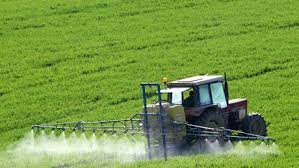Agricultural development refers to the progress and improvements made in farming and food production methods. It involves adopting new techniques, tools, and practices to increase productivity, improve food security, and ensure sustainable use of resources.
Agricultural development is critical because it helps farmers grow more food, manage natural resources better, and support the growing world population. This process also plays a significant role in reducing poverty in rural areas and improving the quality of life for millions of people around the world.
Agricultural development does not just focus on increasing food production but also addresses issues like climate change, soil health, and biodiversity. In this article, we will explore how research and development contribute to this growth, the role of research institutions, universities, and how collaboration boosts innovation in agriculture.
Importance of Research in Agriculture
Research is the backbone of agricultural development. It helps identify new methods and tools that can make farming more efficient, sustainable, and productive. Here’s why research is important:
1. Innovation: Research helps discover new farming techniques, such as precision agriculture, which allows farmers to use resources like water and fertilizers more efficiently.
2. Disease Control: It helps in developing disease-resistant crops and livestock, which reduces the losses caused by pests and diseases.
3. Adaptation to Climate Change: Research helps farmers adapt to changing weather patterns by developing drought-resistant crops and better water management techniques.
4. Improved Yields: Through research, scientists develop seeds that produce higher yields, ensuring more food is available for a growing population.
5. Sustainable Farming: Research promotes sustainable agricultural practices that protect the environment, conserve soil, and reduce the use of harmful chemicals.
Contributions of Research Institutions in Agricultural Innovation

Research institutions play a critical role in agricultural innovation by providing solutions to many challenges faced by farmers. These institutions conduct studies, develop new technologies, and share their findings with farmers. Some major contributions include:
1. New Crop Varieties: Research institutions develop improved varieties of crops that can withstand diseases, pests, and harsh weather conditions.
2. Soil and Water Management: Institutions provide guidelines on how to maintain soil health and use water efficiently, which helps farmers maintain fertile land for long-term use.
3. Animal Husbandry: Research institutions have developed better feeding and breeding practices that improve the health and productivity of livestock.
4. Biotechnology: Research in genetic engineering has led to the development of genetically modified (GM) crops that are more resilient and produce higher yields.
5. Policy Recommendations: Research institutions often collaborate with governments to provide data that shape agricultural policies, improving farming standards at national and global levels.
Role of Universities in Agricultural Education and Training
Universities play a vital role in educating future farmers, scientists, and agricultural experts. They provide essential training that empowers people to contribute to agricultural development. Here’s how universities contribute:
1. Providing Knowledge: Universities offer courses in agriculture, teaching students about plant science, animal science, soil management, and environmental sustainability.
2. Research Opportunities: Universities often have research programs where students can contribute to finding solutions to agricultural problems.
3. Hands-on Training: Universities often have farms where students can apply what they learn in real-life settings. This practical experience is crucial for their development.
4. Innovation Hubs: Many universities are home to agricultural research centers where innovative solutions, like new farming technologies and crop varieties, are developed.
5. Extension Programs: Universities also play a role in extending knowledge to local farmers through workshops, training sessions, and educational programs that teach farmers how to adopt modern techniques.
Collaborative Research and Development Programs
Collaboration is key to driving agricultural development. Governments, private companies, research institutions, and farmers often work together to solve complex agricultural challenges. Collaborative research and development programs are important for the following reasons:
1. Pooling Resources: Collaboration allows different organizations to share resources like funding, technology, and expertise, which speeds up the development of new agricultural solutions.
2. Sharing Knowledge: Collaborative programs promote the exchange of ideas and techniques across borders, allowing farmers from different regions to benefit from agricultural advancements.
3. Farmer Involvement: Farmers are often involved in these programs, ensuring that the innovations developed are practical and applicable to real-world farming.
4. Tackling Global Challenges: Collaborative research helps address global issues like food security, climate change, and sustainable agriculture, as institutions from different countries work together to find solutions.
5. Encouraging Innovation: By working together, institutions and governments can foster innovation in areas like biotechnology, irrigation systems, and pest control methods, making agriculture more efficient and environmentally friendly.
Read Also: How Guava Fruits and Leaves Improve Female Fertility
Advancements in Agricultural Technologies through Research

Technological advancements in agriculture are helping farmers produce more food with fewer resources. Here’s how research is contributing to technological advancements in the field:
1. Precision Farming: Precision farming uses technologies like GPS and data analytics to help farmers apply water, fertilizer, and pesticides more accurately, reducing waste and increasing efficiency.
2. Drones and Satellites: Drones and satellites provide detailed information about the condition of crops and soil. This helps farmers monitor their fields and respond quickly to any problems.
3. Biotechnology: Research has led to the development of genetically modified crops that can resist diseases and pests, which reduces the need for chemical pesticides and improves crop yields.
4. Mechanization: Advances in machinery have made tasks like planting, harvesting, and irrigation more efficient, reducing the amount of manual labor required and speeding up production.
5. Climate-Smart Agriculture: Research into climate-smart technologies has produced innovations like drought-resistant crops, which help farmers adapt to climate change and unpredictable weather patterns.
Addressing Agricultural Challenges through Research
Research plays a critical role in addressing the many challenges faced by agriculture today. As the global population grows and climate change affects farming practices, research provides solutions that allow farmers to adapt and thrive. Some key agricultural challenges that are addressed through research include:
1. Climate Change: Research helps develop drought-resistant and heat-tolerant crops, allowing farmers to continue growing food even in adverse conditions.
2. Pest and Disease Control: Through research, scientists discover new methods to combat pests and diseases without relying heavily on harmful pesticides. For example, biological control methods use natural predators to control pest populations.
3. Soil Degradation: Continuous farming can deplete the soil of nutrients, leading to reduced crop yields. Research helps develop sustainable soil management practices like crop rotation, conservation tillage, and the use of organic fertilizers.
4. Water Scarcity: As water becomes scarcer in many regions, research focuses on improving irrigation systems, developing water-efficient crops, and finding ways to conserve water during farming.
5. Food Security: By increasing crop yields and improving the nutritional content of food through research, scientists contribute to better food security globally.
Capacity Building and Knowledge Transfer in Agriculture
Capacity building and knowledge transfer are essential for ensuring that farmers and agricultural professionals can use the latest research and technologies effectively. These processes involve teaching farmers, agricultural workers, and extension officers about new methods, tools, and practices in farming. Here’s how capacity building and knowledge transfer work:
1. Training Programs: Universities and research institutions often conduct training programs for farmers to help them adopt new farming techniques, such as precision farming or organic farming.
2. Agricultural Extension Services: These services connect farmers with experts who can provide advice and guidance on how to implement research-based practices in their farms.
3. On-Farm Demonstrations: Farmers can learn new techniques through on-farm demonstrations, where they see how the latest tools and methods work in real-life situations.
4. Digital Platforms: Many governments and organizations use mobile apps, websites, and social media platforms to share knowledge with farmers in remote areas.
5. Farmer Field Schools: These are community-based schools where farmers learn by doing. They are a powerful tool for capacity building because they allow farmers to practice and refine the skills they learn.
Read Also: 5 Amazing Health Benefits of Triphala (Three fruits)
Supporting Sustainable Agricultural Practices

Sustainable agricultural practices ensure that farming can continue without depleting natural resources or causing long-term damage to the environment. Research is vital for identifying and promoting these practices, which help balance productivity with environmental protection. Here are some sustainable practices supported by research:
1. Organic Farming: Research promotes organic farming practices, which avoid the use of synthetic fertilizers and pesticides. Instead, organic farmers use natural methods like composting and biological pest control.
2. Agroforestry: This practice involves growing trees alongside crops, which helps improve soil health, conserve water, and provide additional income for farmers through products like fruits or timber.
3. Conservation Tillage: By reducing the amount of tilling (plowing) in a field, conservation tillage preserves soil structure, reduces erosion, and increases water retention.
4. Crop Rotation: Rotating crops from season to season helps maintain soil fertility and prevents the buildup of pests and diseases that target specific crops.
5. Integrated Pest Management (IPM): This method combines biological, cultural, and chemical tools to manage pests in a way that minimizes harm to the environment.
Impact of Research on Rural Development
Agricultural research has a significant impact on rural development, helping to improve the livelihoods of rural communities by increasing productivity, income, and access to resources. Here’s how research contributes to rural development:
1. Increased Productivity: Research leads to better seeds, more effective fertilizers, and advanced farming techniques that help farmers increase their crop yields, thus improving food production and income.
2. Employment Opportunities: As agricultural research leads to new technologies and practices, it creates new job opportunities for rural workers in areas such as machinery operation, pest control, and farm management.
3. Infrastructure Development: Research can help guide the development of rural infrastructure, such as irrigation systems and storage facilities, which improves access to water and reduces post-harvest losses.
4. Poverty Reduction: By increasing agricultural efficiency and improving market access, research helps lift rural farmers out of poverty and improves their standard of living.
5. Health and Nutrition: Research into crop breeding has led to the development of biofortified crops that are rich in essential nutrients. These crops can help address malnutrition in rural areas by providing communities with more nutritious food options.
Agricultural development is crucial for ensuring food security, reducing poverty, and managing natural resources. Research, led by institutions and universities, plays a critical role in advancing agricultural innovation, while collaborative efforts between governments, organizations, and farmers ensure that new technologies and practices are applied effectively. Through continued research and development, agriculture will become more sustainable, efficient, and capable of supporting a growing global population.
By focusing on the importance of research, the contributions of universities, and advancements in technology, we can better understand how agricultural development is shaping the future of farming. Sustainable practices, driven by research and innovation, will help create a more resilient and productive agricultural system for generations to come.
Do you have any questions, suggestions, or contributions? If so, please feel free to use the comment box below to share your thoughts. We also encourage you to kindly share this information with others who might benefit from it. Since we can’t reach everyone at once, we truly appreciate your help in spreading the word. Thank you so much for your support and for sharing!
Read Also: The Effect of Solid Waste on Business Environments

